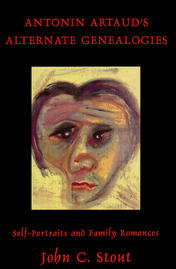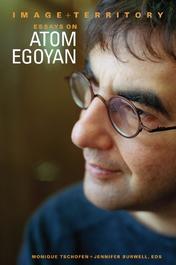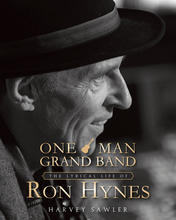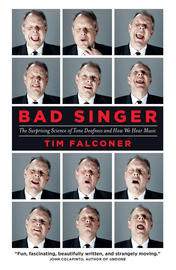Entertainment & Performing Arts






Excerpt from Image and Territory: Essays on Atom Egoyan edited by Monique Tschofen and Jennifer Burwell
From the Introduction
Throughout his career, Atom Egoyan has shown himself to possess the rarest kind of singularity. As Jonathan Romney puts it, Egoyan´s “preoccupations and tropes have been so consistent that he's practically created his own genre” (1995, 8). Hrag Vartanian adds,”Egoyanesque has become a word to film aficionados, commonly understood to mean a cinematic moment that examines sexuality, technology and alienation in the modern world” (2004). For this singularity, Egoyan is widely hailed as a true auteursomeone carrying on the legacy of the European art-house traditions of Bergman, Godard, and Truffaut. Certainly, his work bears a most recognizable signaturethere is no confusing an Egoyan work with anyone else´s. Like his art-house predecessors, Egoyan clearly intends that his work be, as Dudley Andrew puts it,”read rather than consumed,” that is, viewed meditatively, reflected upon, and discussed (2000, 24). And indeed, in this world in which filmmaking has become commonplacewhere, as Egoyan has said,”what used to be a rarified activity is now available to anyone with a digital camera and a computer” (2001b, 18) he intends through much of his work to recall an earlier image culture in which artists had an ability to produce something that gained its power precisely through its rarity. 1
Egoyan has revealed that he is very aware, however, of the dangers inherent in his wish to capture the magic and rarity of the moving image. He does not mean to promote a naïve nostalgia for more innocent times when filmmakers were blindly worshiped. Rather, he seeks to remember a time that, if not more cynical, was at least more conscious of the powers of image-makers. Egoyan has always understood that the cinema has the power to make people believe that what they are seeing is real, and that this makes it an ideal instrument for propaganda (Egoyan 2004b, 888). 2 He has also observed that in different ways, when other storytelling and representational arts strive to construct the real, they too carry the potential to distort and manipulate, to lie and deny. Seeking to draw attention to the conundrum that the very tools we use to represent ourselves to the world and to translate the world back to ourselves might be deceitful and dangerous, he has consistently tried to lay bare the mechanisms of representational practices, showing, as he puts it,”the frame as well as the picture” (Romney 1999, 6). The central Egoyanesque themes revolving around trauma such as incest, violation, erasure, and forgetting--all of which are elaborated upon by the essays in this volume--thus emerge directly from the place where the logic of representational systems and the agency of individual subjects collide.
A few examples from Egoyan´s works will show what we mean here. In The Sweet Hereafter (1997), a father pictures his daughter as a beautiful rock star. Seduced by this image of herself, the daughter complies with her own violation until she realizes that she never resembled this image. Having once been a victim of the art of misrepresentation, she appropriates its tactics in order to rupture other deceptions and fictions. In The Adjuster (1991), a film censor is molested by her colleague while violent pornography plays on the screen before them and another colleague watches on voyeuristically. She frightens them both by seizing her aggressor´s hand as if about to act out the kinds of scenarios they are beholding, and thus exposes the scenes sadistic logic, rendering her assailants impotent. In yet another film, Ararat (2002), an art historian lectures about the many ways destruction is part of a painting by artist Arshile Gorky, in its genesis as well as in its execution. Her exegesis, which sets this one work on a pedestal above all others, suggests that the image serves as a “mirror” to history, offering what she calls a “'sacred code” that translates the traumatic history of the destruction of her own and the artist´s people. Traumatized by the loss of her father, and seeking to mirror a more private history of destruction, the historian´s stepdaughter constructs an alternative code to articulate her personal pain by seeking to destroy the sacred painting. All of Egoyans human traumas are similarly inextricably bound by and caught up in the logic of the media that represent them. As in Escher´s famous drawing of the hand drawing the hand, in Egoyan's works there are only pictures and frames--nothing is outside of the realm of representation. And yet, as in the examples above, if sometimes this means that his subjects become victims of histories scripted for them, other times this means that his subjects transform the logic of these scripts and are, themselves, transformed for the better.
Egoyan´s output in a wide range of media has shaped the way he conceives the relationships different media can provoke between producers and consumers of cultural products. As a precocious young man living in Victoria, Canada, Egoyan was, by the age of thirteen, not only familiar with but thoughtfully experimenting with the premises of the theatre of the absurd--Ionesco, Genet, Beckett, Pinter, and Adamov--as well as with the British absurdist humour of Monty Python (Egoyan 2004a, 68). 3 In the dozens of plays he has written and that are available in the archive--at least ten of which were mounted on stage, often under his own direction--Egoyan clearly announces the core issues his later work pursues: immigration, dispossession, and placelessness; history, memory, and forgetting; and that highly charged and aestheticized tension between intimacy and violation.




